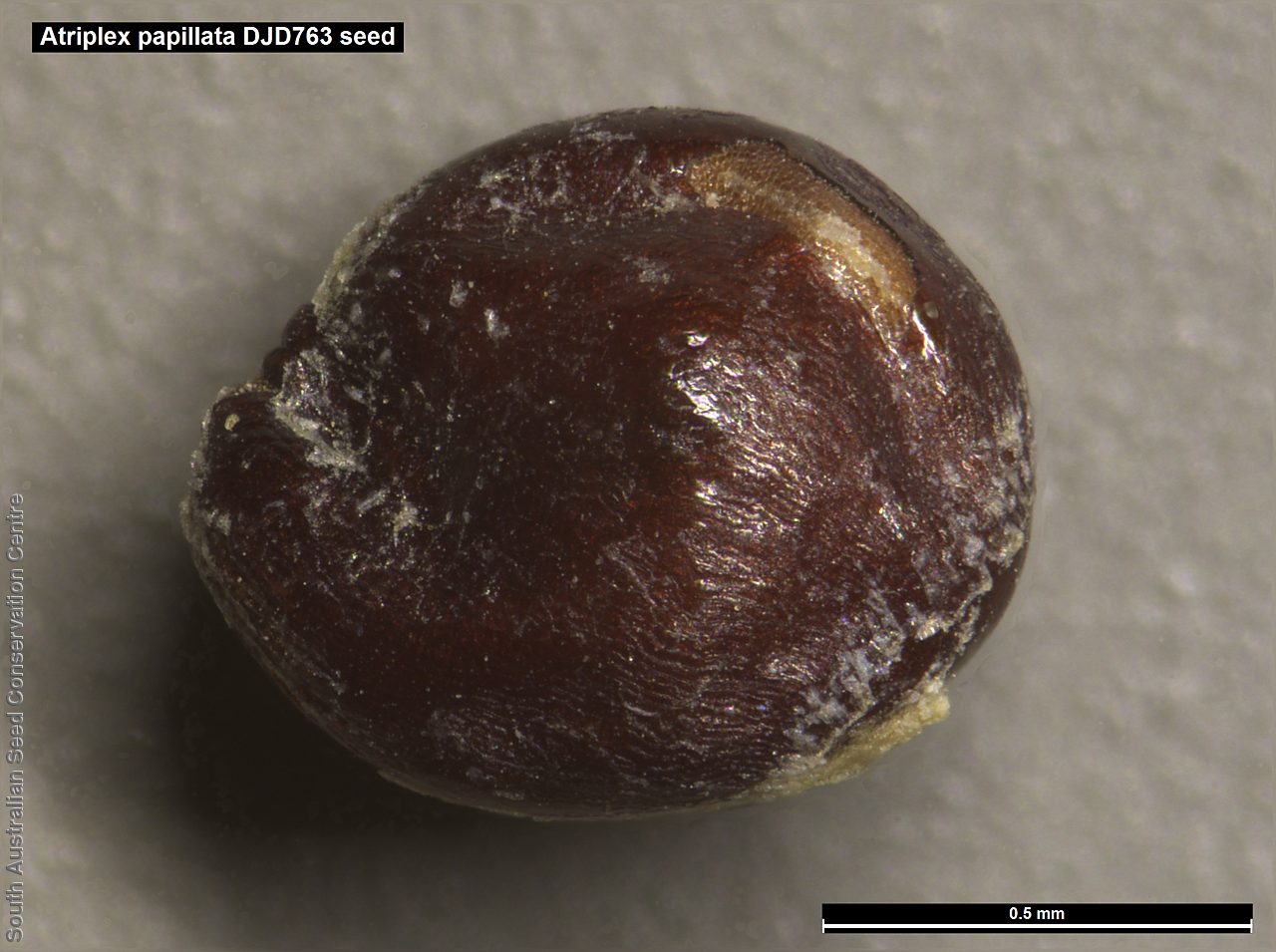
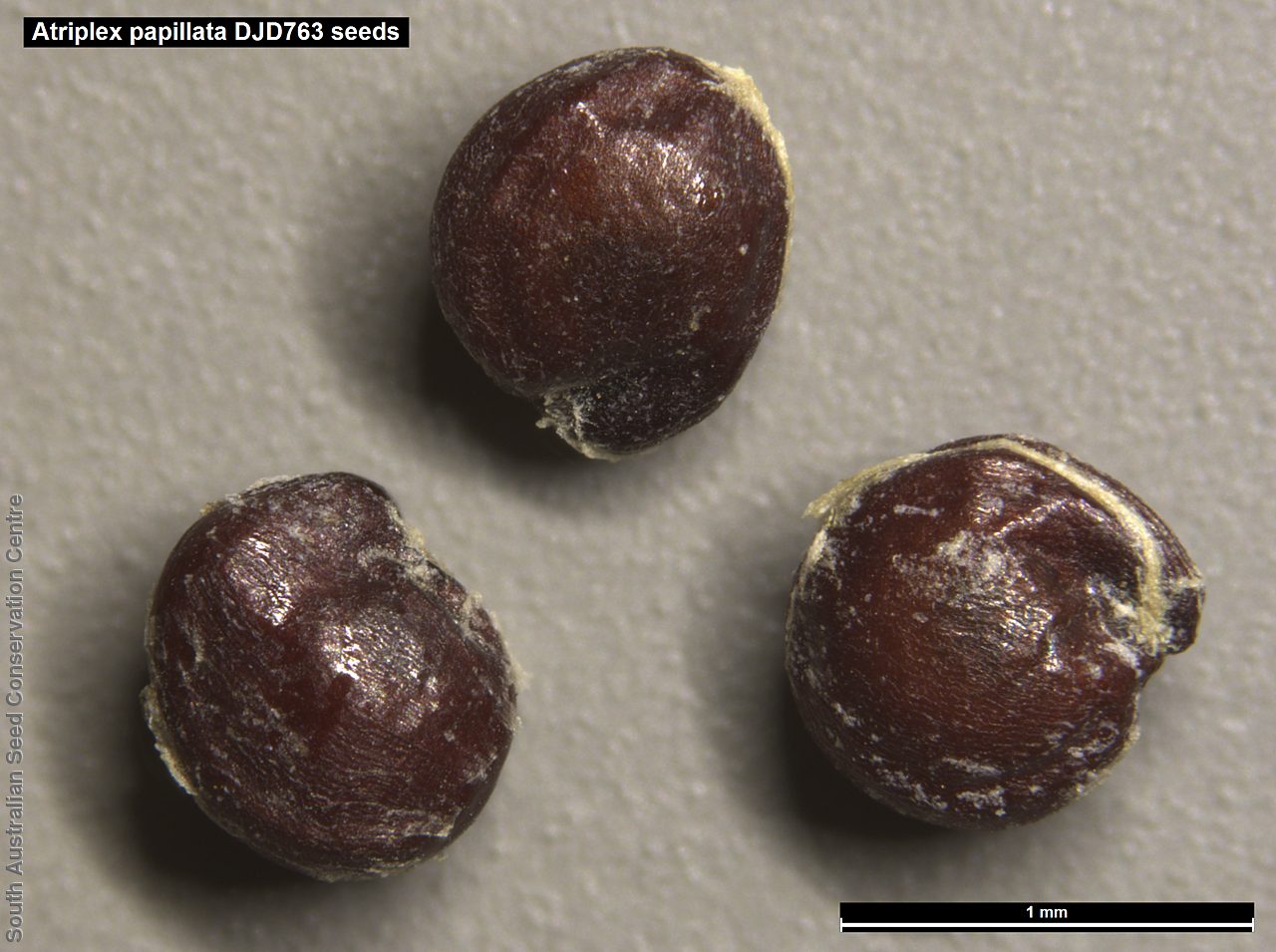
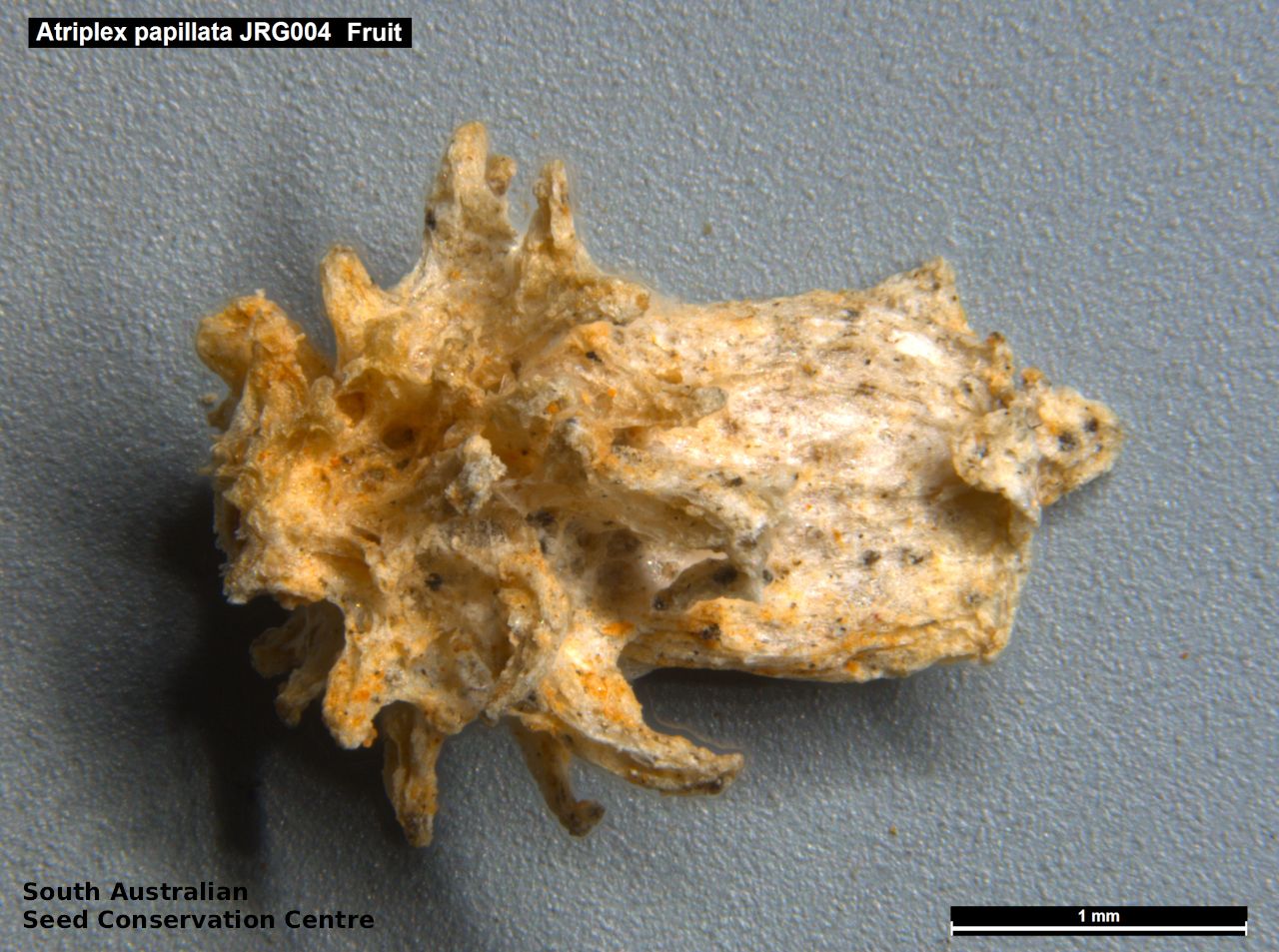
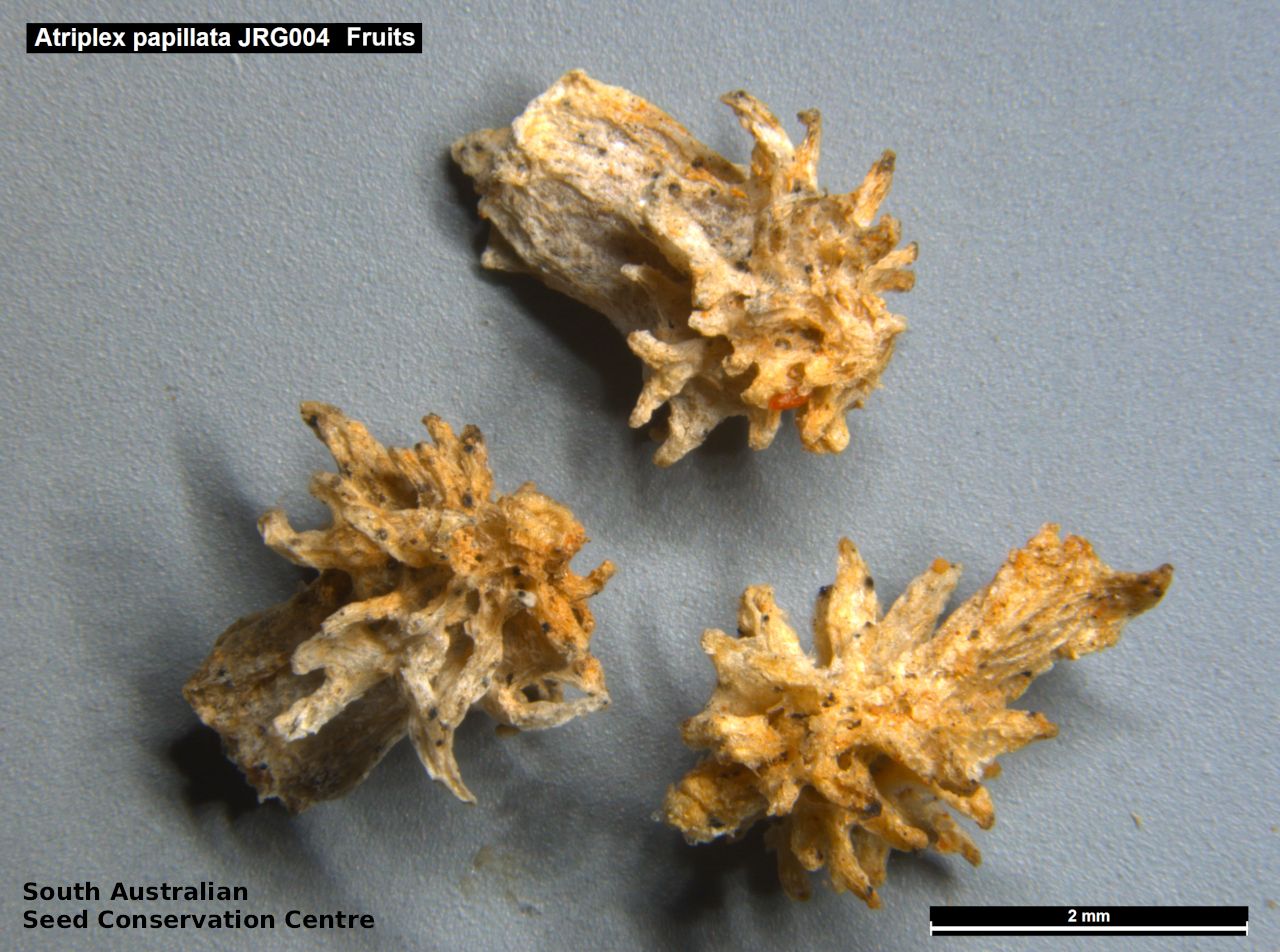
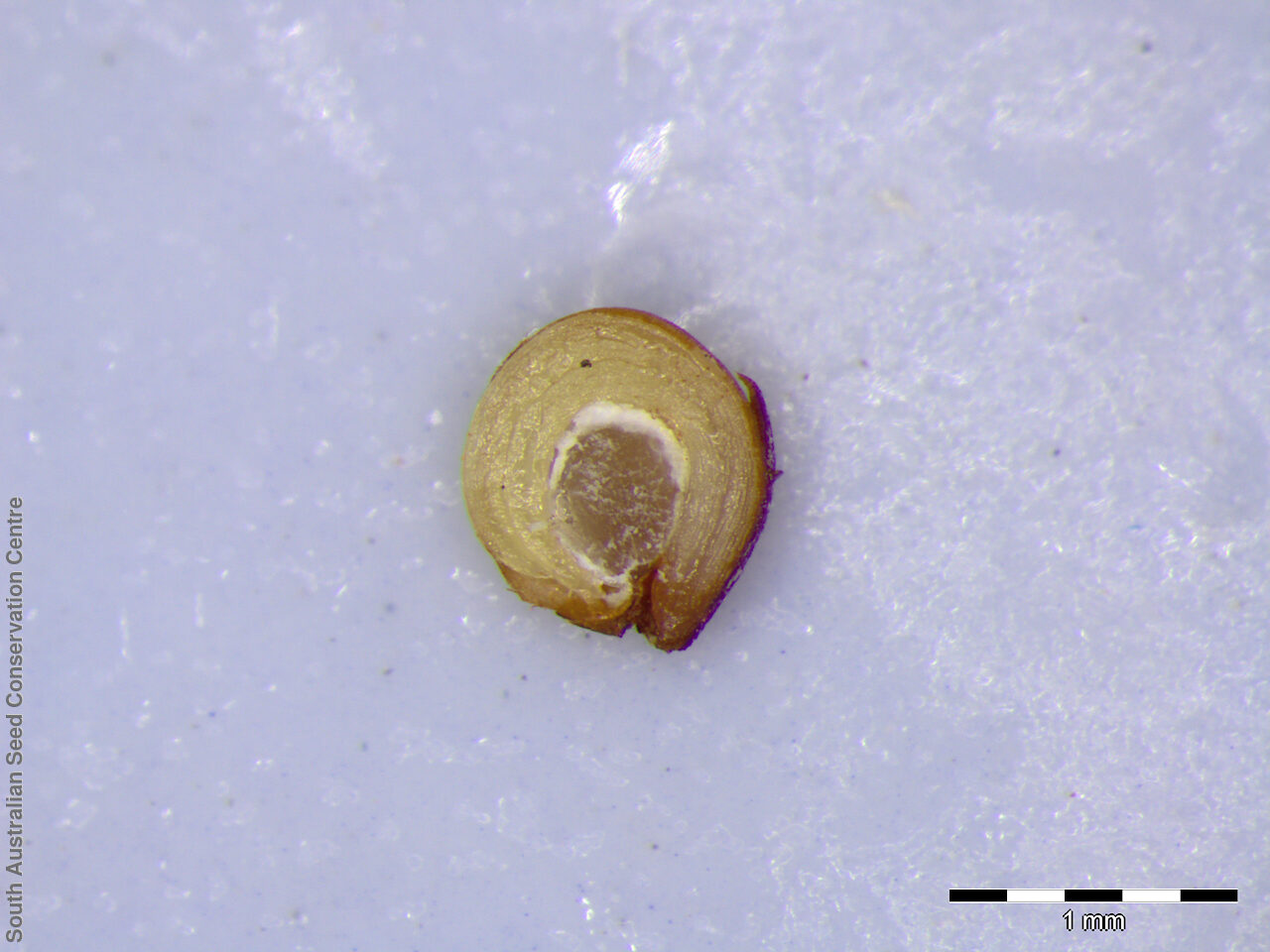
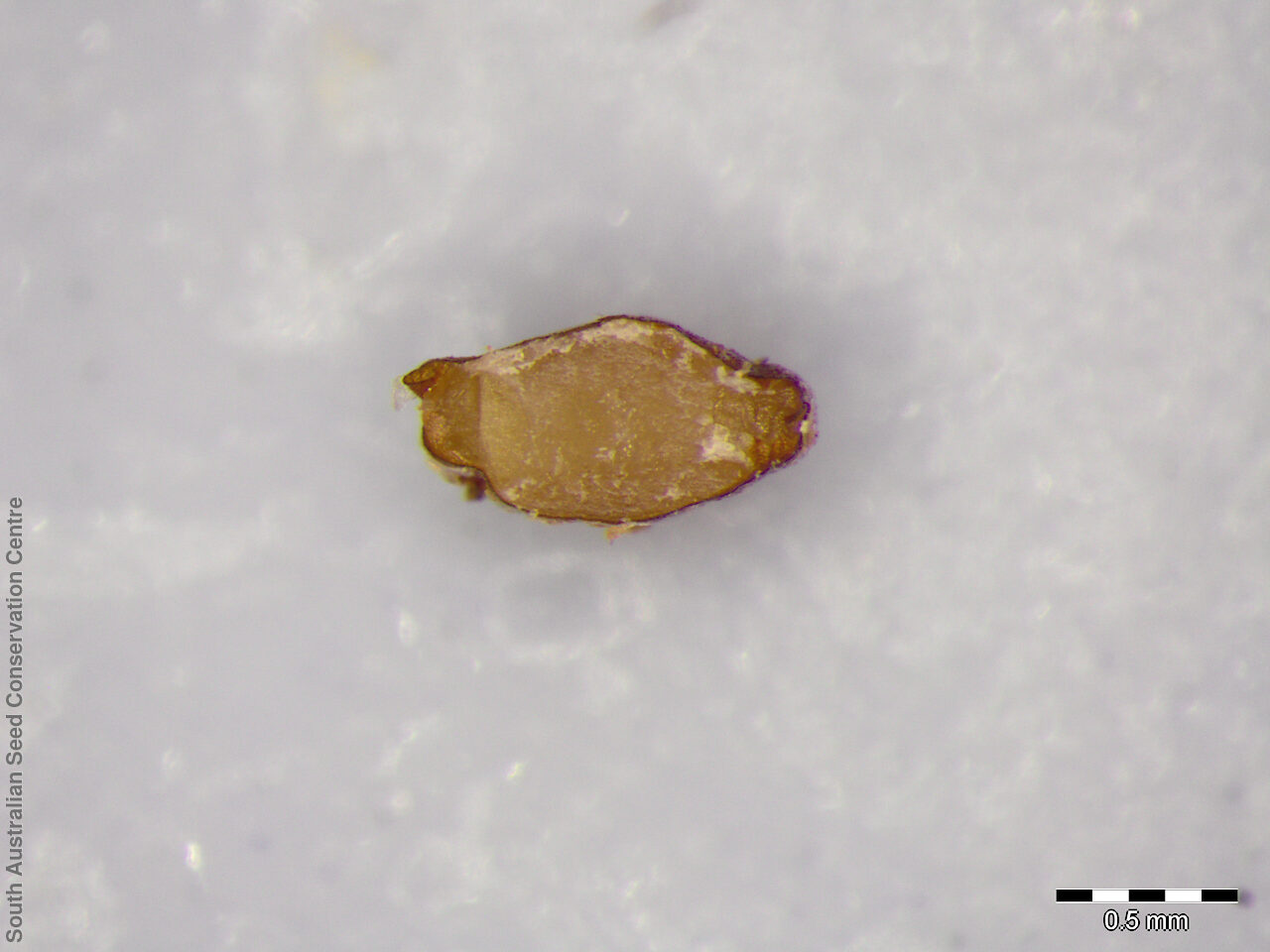

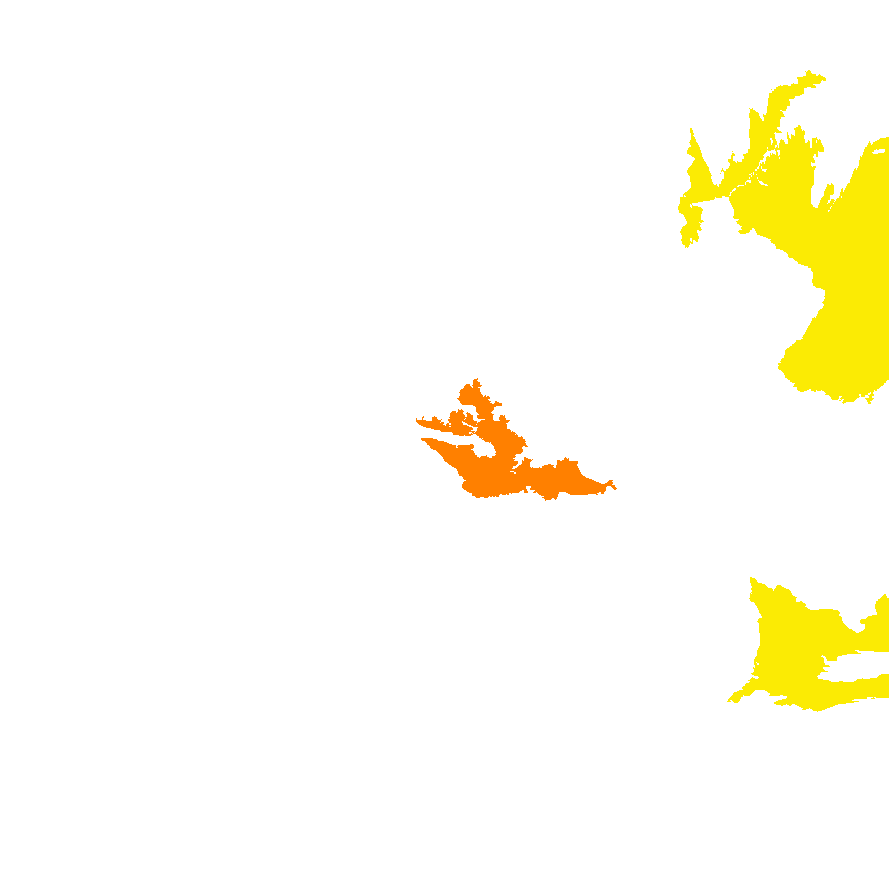
Etymology
Atriplex from the Latin 'atriplexum' meaning an orach, a saltbush; an Ancient Latin name for this plant. Papillata from the Latin 'papillae' meaning soft protuberances, referring to the prominent soft warty appendages on the fruit.
Distribution and status
Restricted to a few sites near Loxton and Remark in South Australia; usually found in saline soil. Also found in New South Wales and Victoria. Native. Rare in South Australia. Uncommon in New South Wales. Common in Victoria.
Herbarium regions: Gairdner-Torrens, Eastern, Murray
NRM regions: South Australian Arid Lands, South Australian Murray-Darling Basin
AVH map: SA distribution map (external link)
Plant description
Prostrate to spreading annual or short-lived perennial herb to 20cm high, with slender branches. Leaves thick, linear to lanceolate to 20mm long with a densely grey-scaly indumentum below and sparsely scurfy above. Male and female flowers on the same plant. Male flowers in terminal axillary glomerules. Female flowers in axillary clusters of 2-4. Flowering in March to June. Fruits are small brown fruit to 4mm long, truncate or irregularly lobed; fused to near the apex, with the lower half having numerous prominent soft warty appendages; upper half smooth and flat with three short teeth. Seeds are dark-brown circular reniform seed to 1mm diameter. Seed embryo type is peripheral.
Seed collection and propagation
Collect seeds between June and August. Rub hands through the branches to dislodge mature fruits from the plant. The mature fruit which are pale-brown should full off easily and have a hard brown seed inside. Place the fruits in a tray and leave to dry for one to two weeks. No cleaning is required if only the fruits are collected. The seed can be stored in the fruit or can be clean further. Rub the fruit gently by hand to dislodge the seeds. Use a sieve to separate the unwanted material. Store the seeds with a desiccant such as dried silica beads or dry rice, in an air tight container in a cool and dry place. From one collection, the seed viability was high, at 100%. Seeds are non-dormant, viable seed should germinate readily.
| Location | No. of seeds (weight grams) | Number of plants | Date collected | Collection number Collection location | Date stored | % Viability | Storage temperature |
|---|---|---|---|---|---|---|---|
| BGA MSB | 8,000 (1.834 g) 8,000 (1.834 g) | 200+ | 1-Feb-2007 | DJD763 Murray | 1-Aug-2007 | 100% | +5°C, -18°C |
| BGA | 3,600 (6 g) | 50+ | 14-Dec-2011 | DJD2305 Murray | 1-Nov-2012 | 40% | -18°C |
Number of plants: This is the number of plants from which the seeds were collected.
Collection location: The Herbarium of South Australia's region name.
% Viability: Percentage of filled healthy seeds determined by a cut test or x-ray.